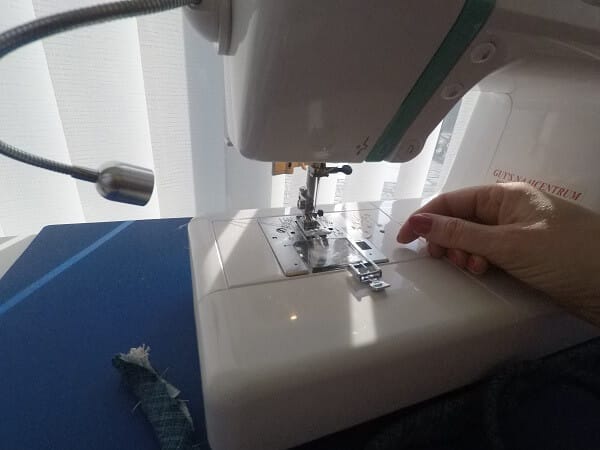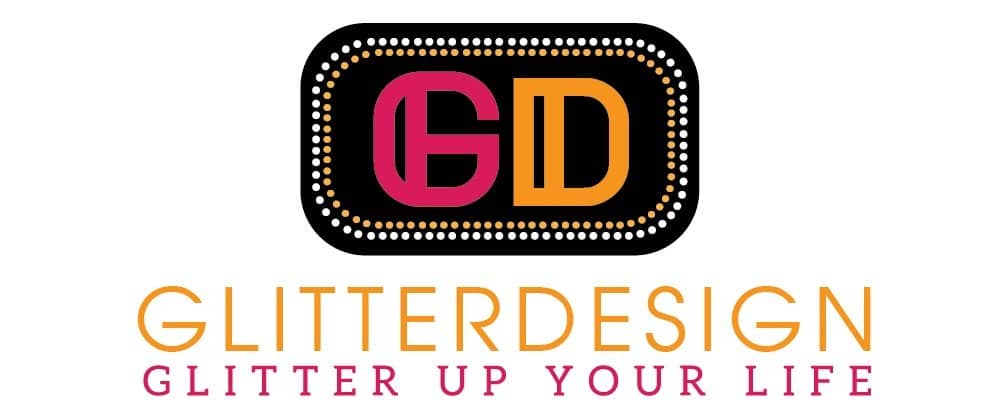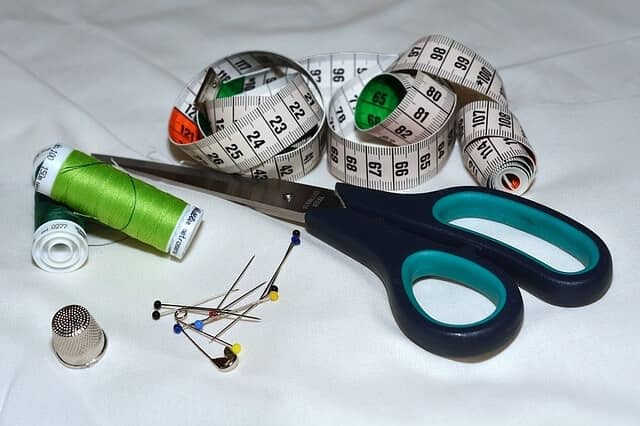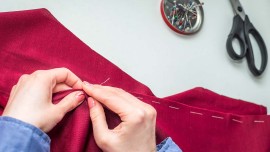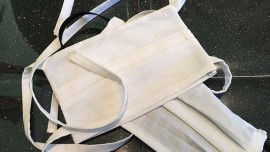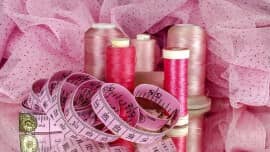Everyone can start making their own clothes!
If you have never held a needle and thread yourself, it indeed seems like a “mission impossible”. But believe me; I speak from experience, making clothes yourself is certainly not impossible. Before my mother died of cancer a while ago I never once sewed anything. My mother was a seamstress and made clothes for other people. It was easy for her to put in a hem, to make a dress or replace a zipper. And then suddenly I was no longer there and I knew nothing about sewing. But with a little help and the right tools, I have made good progress. In this and following blog posts I want to share my experiences with you. What I think is important is that you have the right sewing supplies to start with.

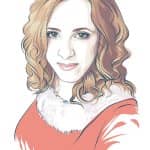

- Good scissors:
- A good pair of fabric scissors: you should choose one with long “blades” so that you can cut through the fabric with long, smooth movements. The length of the leaf can vary between 20 and 30 cm. The scissors must lie well in your hand. So it’s best to ask the store to be able to test them. There are also scissors with curved blades that are great for cutting textiles because the fabric can then stay flat. It is best to choose a scissor of very good quality that can also be sharpened later. And that way can last a lifetime. These scissors may only be used to cut fabric. If you use them for paper, they will become blunt!
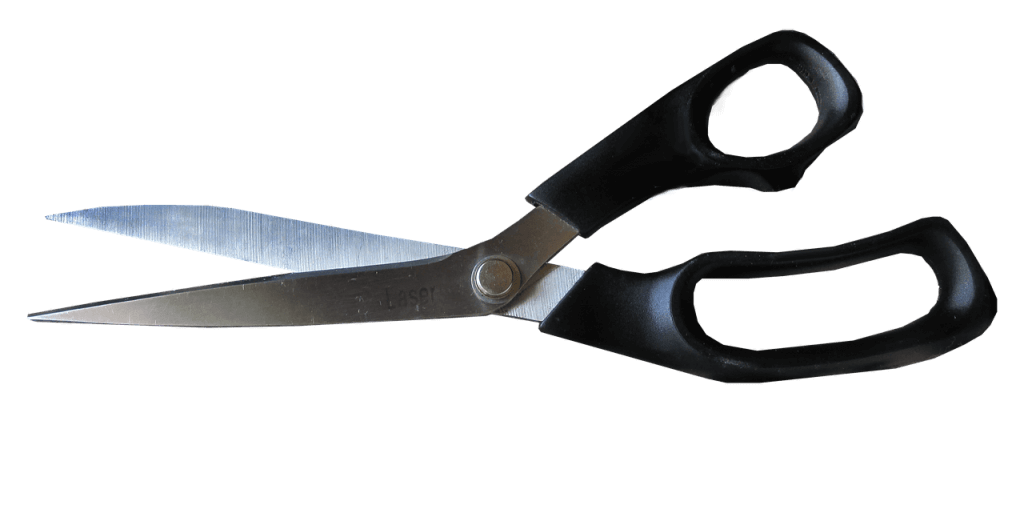
- Paper scissors: use these scissors to cut pattern pieces
- Small sewing scissors: is useful for cutting threads or giving small cuts to your sewing
- Knurled scissors (optional): these scissors are just as large as a dust scissors but with a blade that has a zigzag pattern. It is used to finish seams of certain fabrics so that they do not fray and to make a decorative border. You can also cut textile that unravels quickly
- Pins: come in different sizes. Preferably use stainless steel pins of at least 3 cm long. The best pins are long, thin, sharp and of good quality so as not to damage the fabrics
- Needles: are available in various lengths and thicknesses. The higher the number, the finer the needle. It is best to buy a standard assortment box to get started. Also don’t forget to purchase a basting needle. This one has a large eye and a blunt tip and is used to baste 2 pieces of clothing together (or three as I heard my mother and grandmother say)
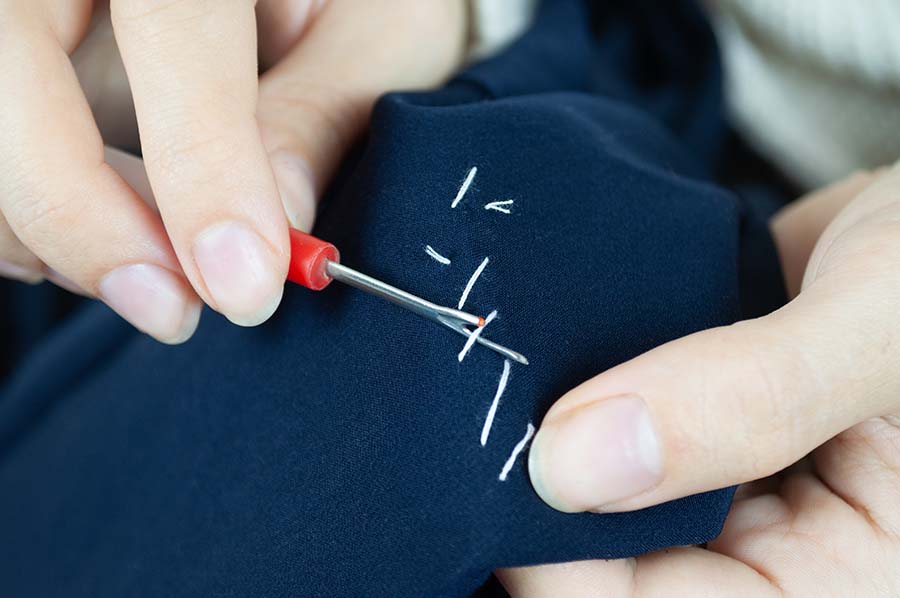
- Seam ripper: is indispensable for loosening stitching. It has a forked end. There is a sharp edge between the teeth of the fork that acts as a knife. The seam ripper is also used to cut open buttonholes without damaging the fabric. Cam knives come in varying degrees, suitable for seams in light and heavier fabrics
- Thimble: to protect the finger when sewing (optional)
- Thread: to be used with the thread
- Yarn: cannot of course be missing as one of the necessary sewing accessories. Use the same color as the fabric to the extent possible. If this is not available, it is best to use a shade that is darker. For fabrics with a motif, rhombus or stripe, choose a thread color that matches the most striking color of the fabric. The type of yarn that we choose depends on the fabric to be stitched. In a specialist store they usually give you very good advice here.

For all types of yarn (cotton, silk, polyester, synthetic) the number determines the thickness of the thread. The higher the number, the finer the yarn. Be careful with 100% cotton yarns because there is a risk that they will shrink while washing. Synthetic sewing thread (100% polyester) is suitable for almost all types of fabric, even for elastic fabrics because it is lightly stretchable. It is best to go for branded yarn from eg Gütermann, because my experience is that cheaper yarns can break and fluff easier and that is not so good for the sewing machine.
- Measuring material:
- Tape measure : a tape measure is useful for measuring curved lines. This ruler is usually just as wide as the standard seam allowance (1.5 cm).
- A sewing seam ruler: a 15 cm long seam ruler has a caliper that you can set at different distances. This is very useful for marking seams and hems and for measuring small dimensions precisely. There are also seam gauges without sliders. These are also useful for finishing seams and hems. Each side has a different seam value.
The type of yarn that we choose depends on the fabric to be stitched!
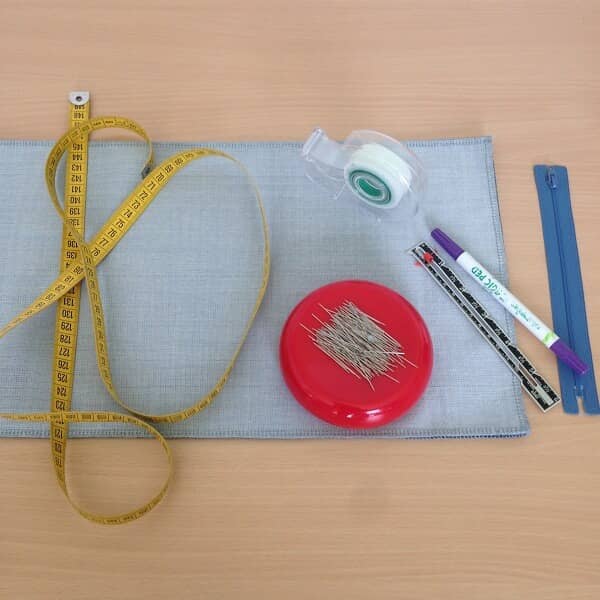
- Fabric marking tools:
- ceramic lead pens (gives more precise lines)
- tailor’s chalk (you can wipe it off in no time). There is also a chalk pencil. I personally find this very useful. You can fill this with chalks in different colors so that you can apply the appropriate chalk color to any fabric color.
- water soluble or disappearing ink pens: to apply markings to textiles, which gradually disappear afterwards. This pen looks like a felt-tip pen. With some markers they can be dusted off with a spray or water, or they disappear by allowing them to air dry. Be careful because if you iron over it, they may not go out. Test first for a piece of fabric.
- Tracing wheel and carbon paper: to transfer markings from a paper pattern to your fabric. Note: they are not suitable for all types of fabric, because the markings do not always come out easily. So here too: best to test.
- Material to draw or improve patterns:
- Pattern paper: there is pattern paper with pre-printed squares of 4 by 4 cm, patterned paper per roll or in packets of a few sheets
- Pencil and eraser
A transparent ruler of 30 cm: to draw straight lines of patterns on paper and textile and to check dimensions. Ideal is the square, which has a right angle and a curve along which you can draw curved lines in your pattern.
Indispensable: a pencil and an eraser to (re) draw patterns
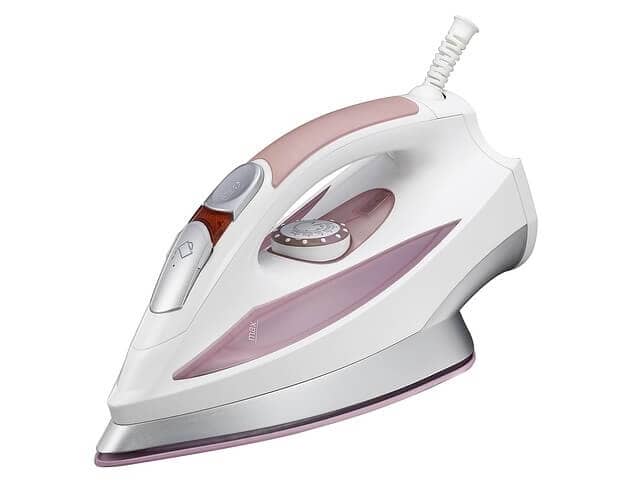
- Ironing equipment:
- Iron: A steam iron is a fantastic help
- Ironing board: you definitely need to iron
sleeve board: for easy ironing of sleeves - Pressing cloth: take a cloth made of silk organza or nettle cloth so that you can see through it. It prevents the iron from scortching, melting or burning fine fabrics
- Press pad: used to press the seams of collars and shoulders
- Machines
A good sewing machine is of course indispensable for making your own clothing. And although in principle a machine that can make a straight and zigzag stitch is sufficient, modern machines offer countless possibilities. I personally have a very good experience with Janome. With regard to sewing machines, I will go into more detail in a subsequent blog post.
A lock machine is easy but not a must.
In my next post I will give you tips for the purchase of a first sewing machine, patterns and fabric.
Did you find this article useful? Give me a like!
